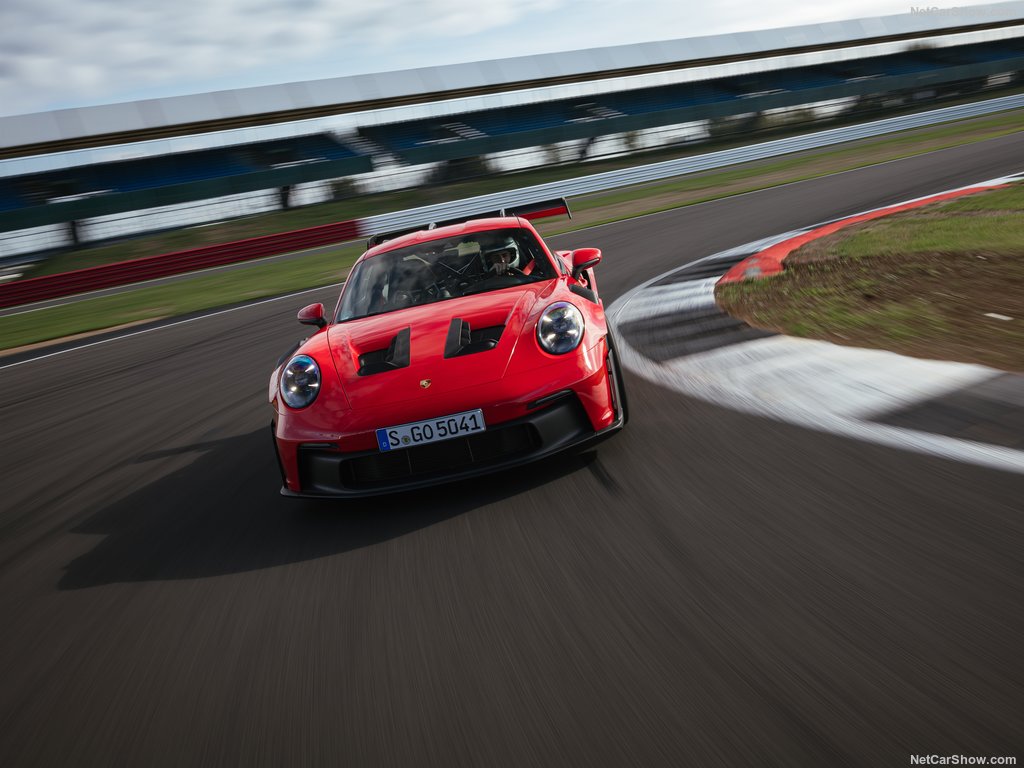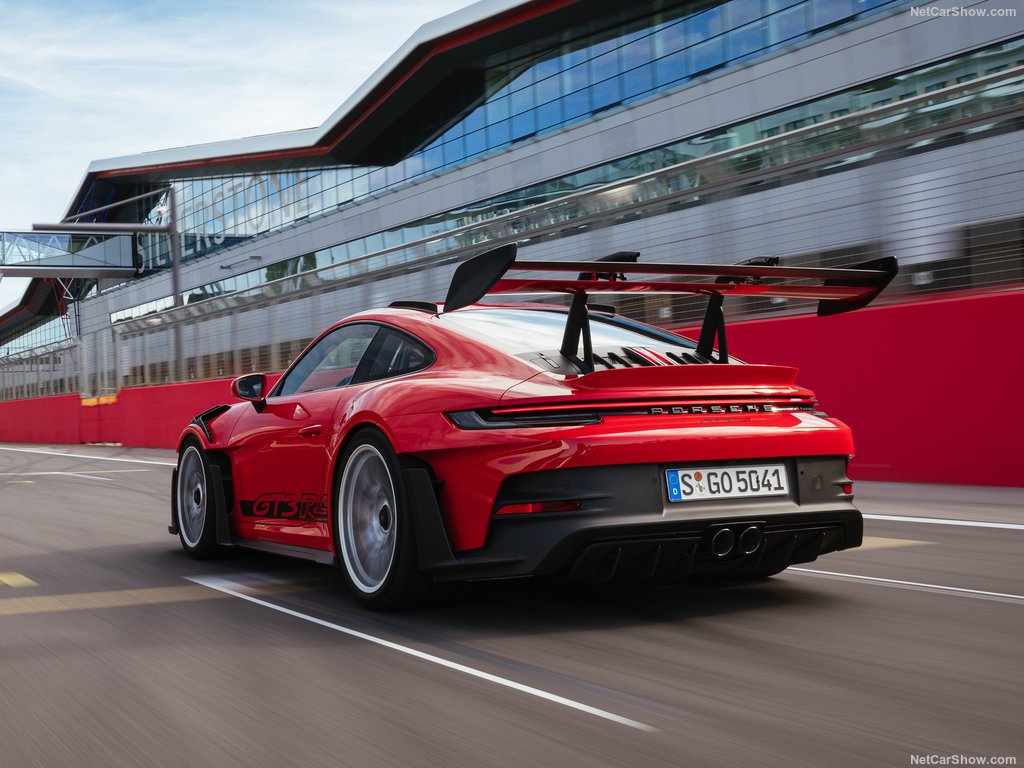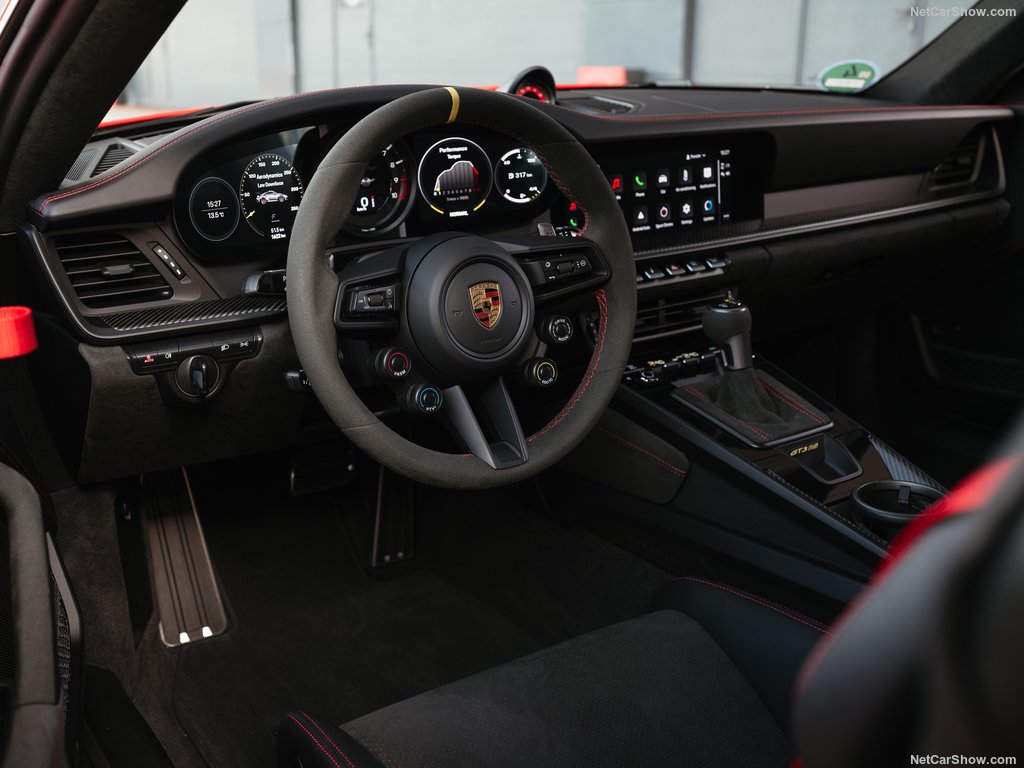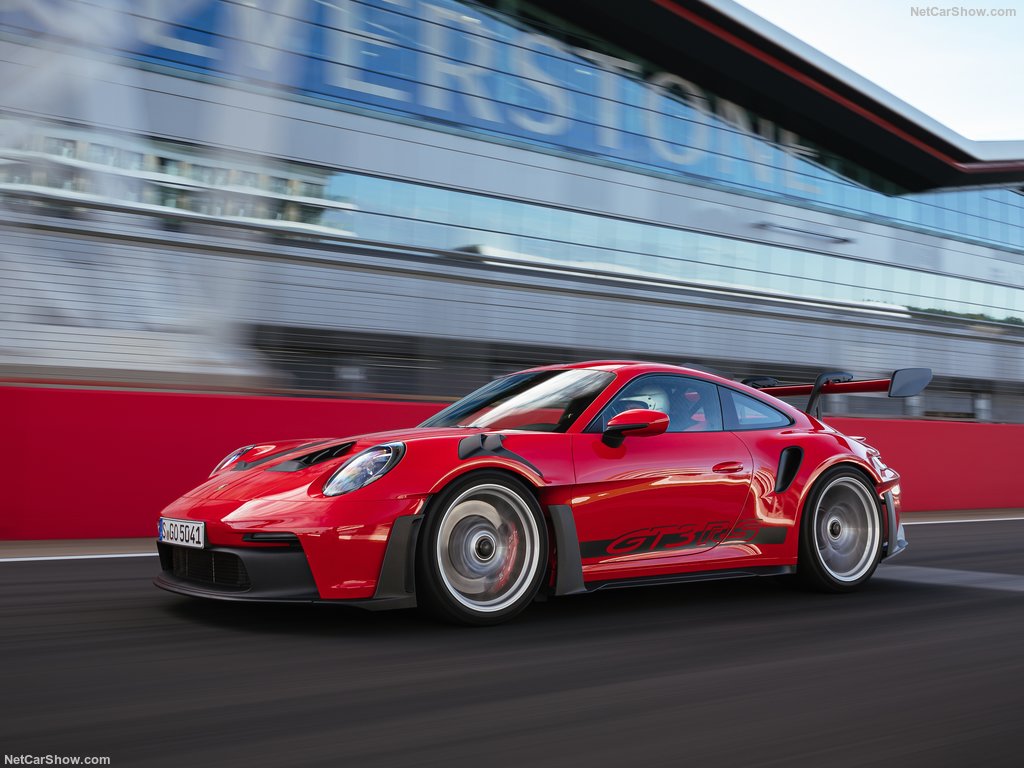
The new Porsche 911 GT3 RS makes no secret of its intentions: it is uncompromisingly designed for maximum performance. The 386 kW (525 PS) road-legal high-performance sports car takes full advantage of technology and concepts from motorsport. Even beyond the high-revving naturally aspirated engine with racing DNA and intelligent lightweight construction, it is, above all, the cooling and aerodynamic systems of the 911 GT3 RS that connect it most directly with its motorsport brother, the 911 GT3 R.
Active aerodynamics and drag reduction system (DRS)
The total downforce of the new Porsche 911 GT3 RS is 860 kilograms at 285 km/h. The main reason for the enormous increase in downforce is Porsche Active Aerodynamics (PAA). The system includes continuously adjustable wing elements on the front and on the two-part rear wing. A drag reduction system (DRS) has also been fitted in a production Porsche for the first time. To achieve reduced drag and higher speeds on straight sections of the track, the DRS enables the wings to be flattened out at the push of a button, within a specific range.

Intelligent lightweight construction
Thanks to an array of lightweight construction measures, the lightest version of the 911 GT3 RS weighs in at just 1,450 kg (unladen weight according to DIN). The doors, front wings, roof, front lid and rear lid, for example, are made from carbon-fibre reinforced plastic (CFRP). Light CFRP is also used in the interior.
Chassis optimised for use on the racetrack
Due to the wider track, the double-wishbone front suspension links are longer than on the 911 GT3. To ensure that the downforce balance between the front and rear axles is maintained even when braking from high speeds, the chassis engineers have significantly reduced the pitching under braking (antidive) of the new 911 GT3 RS. The multi-link rear axle has also been adjusted, with modified spring rates. The driver assistance systems and rear-axle steering have also been given an even more dynamic set-up. In Track driving mode, the basic settings can be individually adjusted. Among other settings, the rebound and compression damping of the front and rear axles can be adjusted separately and in several stages. The rear differential lock rate and traction control can also be adjusted via rotary controls on the steering wheel.

Four-litre six-cylinder boxer engine with single-throttle intake system
The 4.0-litre high-revving naturally aspirated engine has been further optimised compared with the 911 GT3. The increase in power to 386 kW (525 PS) is achieved primarily via new camshafts with modified cam profiles. The single-throttle intake system and the solid cam followers, which have also been optimised, are derived from motorsport. The seven-speed Porsche dual-clutch transmission (PDK) has a shorter overall gear ratio than the 911 GT3. The 911 GT3 RS accelerates from zero to 100 km/h in 3.2 seconds and reaches a top speed of 296 km/h in seventh gear.

Control concept adopted from motorsport
Four individual rotary controls and a button for the drag reduction system (DRS) are located on the steering wheel. These rotary controls are clearly displayed via graphics in the instrument cluster during the adjustment process. The 911 GT3 RS also features the track screen already familiar from the 911 GT3. At the touch of a button, the driver can reduce the information on the digital displays on the two seven-inch side displays to show the essential details only.


Source: NetCarShow.com


 Ru
Ru Az
Az